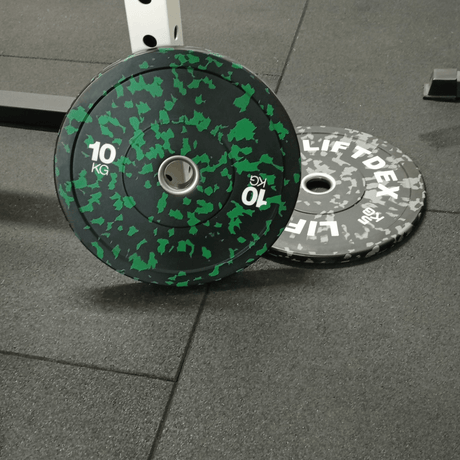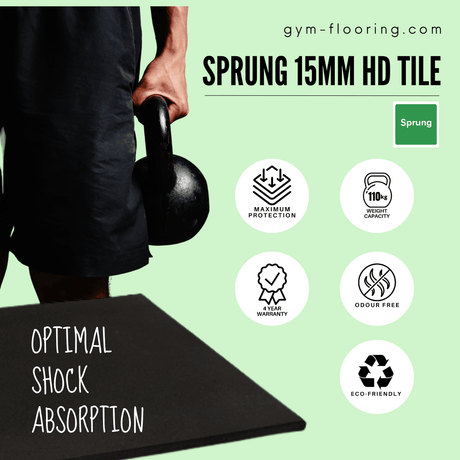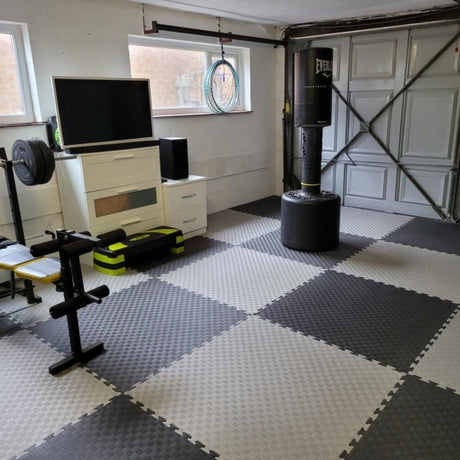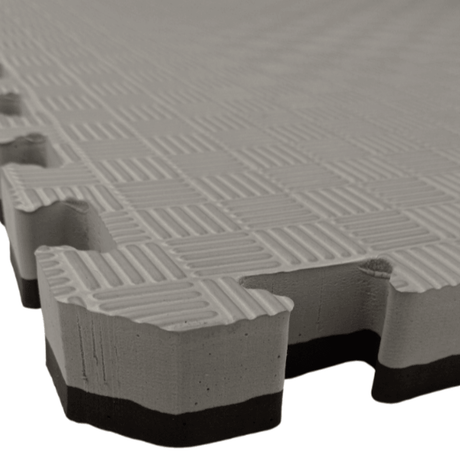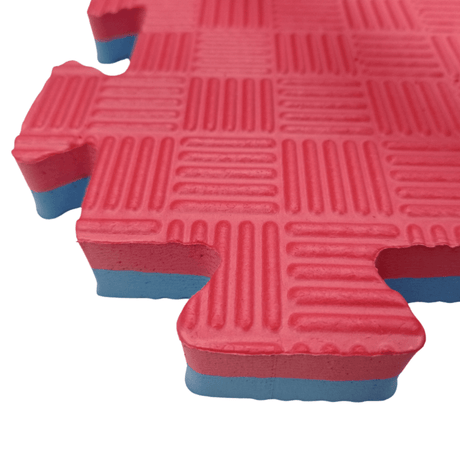When it comes to equipping a gym the type of gym flooring you choose isn’t just about looks; it’s about function and durability especially when it comes to water resistance. Whether you’re setting up a home gym corner or a large fitness centre, knowing if gym mats are waterproof is key.
Here’s what you need to know about the two main types of mats used in gyms – rubber mats and foam mats – and their water resistance.
Table of Contents
Waterproof Gym Mats: Rubber vs. Foam

Rubber Mats: Rubber mats are the workhorses of the gym floor. You’ll find thick, heavy-duty rubber gym tiles in the free weights area where they provide cushioning and protect the floor from dropped weights. They’re also used in cardio areas but in a lighter form. Rubber is naturally water resistant so it’s a great choice for gym environments where spills, sweat and moisture are the norm.
Foam Mats: On the softer side, foam mats are used in fitness studios and areas designated for specific types of training like boxing, MMA and wrestling. Foam mats can be made from closed-cell or open-cell foam, closed-cell foam tiles are the more water resistant option. Closed-cell foam has a tighter cell structure which prevents moisture from penetrating the material, it’s an excellent choice for humid environments or areas where hygiene and moisture control is key.
Other Surface Types: Another surface widely used in fitness centres and gym's is synthetic grass turf. This most often comes in the form of a sled track or a specific zone is installed with artificial grass for functional training and similar workouts. This also has some good water resistance, as the material often comes with drainage holes to allow moisture to pass through without becoming trapped or absorbed.
Top Tip:
"Try to choose rubber gym mats with integrated drainage channels. These are typically the thicker range of rubber tiles. Having these channels to the base of the tile can help to avoid moisture damage to your flooring from flooding, over-wet mopping or outdoor shoes in bad weather"
(Jason - Sprung Sales Advisor)
Why Water Resistance Matters in Flooring

Water resistance in gym mats isn’t just about keeping the area dry; it’s about longevity and safety. Gyms, fitness spaces and even changing rooms have high levels of moisture. Without water resistant mats these spaces can become breeding grounds for bacteria and mould. Water absorbent materials can degrade faster and become odourous, not ideal for spaces designed to promote health and fitness.
In areas beyond the gym, like factory floors and children’s play surfaces, water resistance is just as important. These areas often get spillages or have high footfall from wet feet, especially in areas like swimming pool decks. Here water resistant mats help keep it safe and reduce the maintenance headache of dealing with soggy surfaces.
Conclusion
No flooring type is 100% waterproof but many are water resistant. Choose the right mat for each area of your gym and follow good maintenance practices and you’ll have a safe, hygienic and healthy gym. A little knowledge goes a long way in keeping your fitness flooring in top shape.
Looking for premium quality gym flooring for your fitness space? Explore our home fitness flooring or commercial fitness surfaces for a full range of options.





